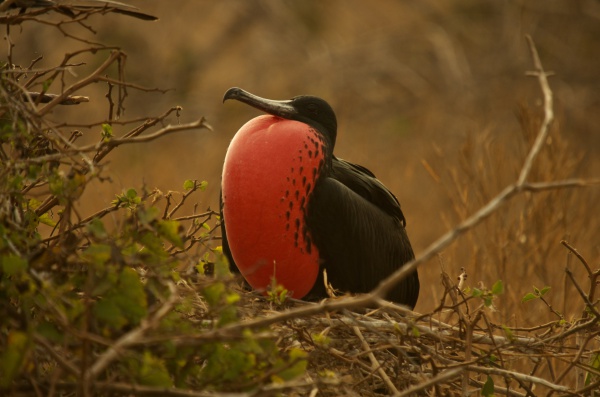Facts About Magnificent frigatebird
The magnificent frigatebird, belonging to the frigatebird family Fregatidae, is the largest species within its family. These remarkable seabirds measure between 89 and 114 cm in length and boast a wingspan ranging from 2.17 to 2.44 meters. They inhabit the tropical and subtropical waters off the Americas—from northern Mexico to Ecuador on the Pacific side and from Florida to southern Brazil along the Atlantic coast. They are also found in the Galápagos Islands in the Pacific and the Cape Verde islands in the Atlantic.
These birds are quite striking. Male magnificent frigatebirds are known for their bright red gular sacs, which they inflate to attract mates. Females are slightly larger and have a white breast and belly.
The name "frigatebird" dates back to encounters by Christopher Columbus in the 15th century and was coined by French mariners. The species name "magnificens" translates to "splendid" in Latin. In 1914, Australian ornithologist Gregory Mathews officially classified the magnificent frigatebird as a separate species, naming it Fregata magnificens. These birds are widespread across the tropical Atlantic, breeding in various locations and sometimes straying far from their usual habitats.
During the breeding season, males display their scarlet throat pouches, while females have distinct white markings. Juveniles can be identified by unique belly patches. These birds are generally silent when flying but can be heard making rattling sounds at their nests. They spend a substantial amount of time on the wing, often covering long distances and soaring to great heights. Both parents are involved in nest-building, egg incubation, and caring for their young.
Their diet mainly consists of fish, squid, jellyfish, and crustaceans. They also exhibit kleptoparasitic behavior, stealing food from other seabirds. Recent genetic studies have provided fascinating insights into gene flow and genetic uniqueness among different populations, especially highlighting the distinctiveness of the Galápagos population. This genetic uniqueness raises conservation concerns, as any threats could endanger this specific group. Although the magnificent frigatebird is currently classified as of Least Concern, the status of the Galápagos population might need reconsideration due to its genetic distinctiveness.

 Haiti
Haiti